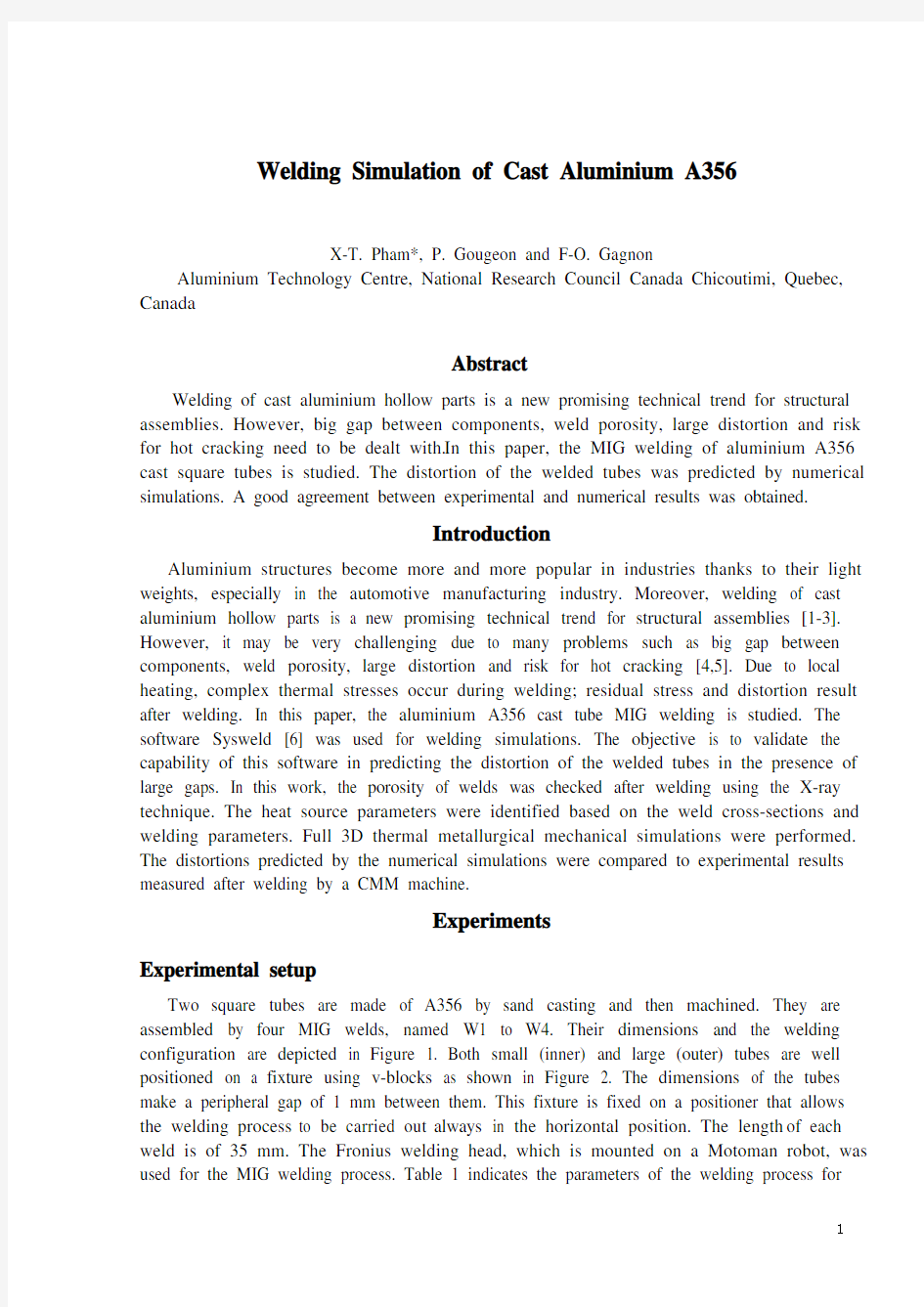反应釜毕业设计外文翻译

- 1、下载文档前请自行甄别文档内容的完整性,平台不提供额外的编辑、内容补充、找答案等附加服务。
- 2、"仅部分预览"的文档,不可在线预览部分如存在完整性等问题,可反馈申请退款(可完整预览的文档不适用该条件!)。
- 3、如文档侵犯您的权益,请联系客服反馈,我们会尽快为您处理(人工客服工作时间:9:00-18:30)。
Welding Simulation of Cast Aluminium A356
X-T. Pham*, P. Gougeon and F-O. Gagnon
Aluminium Technology Centre, National Research Council Canada Chicoutimi, Quebec, Canada
Abstract
Welding of cast aluminium hollow parts is a new promising technical trend for structural assemblies. However, big gap between components, weld porosity, large distortion and risk for hot cracking need to be dealt with. In this paper, the MIG welding of aluminium A356 cast square tubes is studied. The distortion of the welded tubes was predicted by numerical simulations. A good agreement between experimental and numerical results was obtained.
Introduction
Aluminium structures become more and more popular in industries thanks to their light weights, especially in the automotive manufacturing industry. Moreover, welding of cast aluminium hollow parts is a new promising technical trend for structural assemblies [1-3]. However, it may be very challenging due to many problems such as big gap between components, weld porosity, large distortion and risk for hot cracking [4,5]. Due to local heating, complex thermal stresses occur during welding; residual stress and distortion result after welding. In this paper, the aluminium A356 cast tube MIG welding is studied. The software Sysweld [6] was used for welding simulations. The objective is to validate the capability of this software in predicting the distortion of the welded tubes in the presence of large gaps. In this work, the porosity of welds was checked after welding using the X-ray technique. The heat source parameters were identified based on the weld cross-sections and welding parameters. Full 3D thermal metallurgical mechanical simulations were performed. The distortions predicted by the numerical simulations were compared to experimental results measured after welding by a CMM machine.
Experiments
Experimental setup
Two square tubes are made of A356 by sand casting and then machined. They are assembled by four MIG welds, named W1 to W4. Their dimensions and the welding configuration are depicted in Figure 1. Both small (inner) and large (outer) tubes are well positioned on a fixture using v-blocks as shown in Figure 2. The dimensions of the tubes make a peripheral gap of 1 mm between them. This fixture is fixed on a positioner that allows the welding process to be carried out always in the horizontal position. The length of each weld is of 35 mm. The Fronius welding head, which is mounted on a Motoman robot, was used for the MIG welding process. Table 1 indicates the parameters of the welding process for
